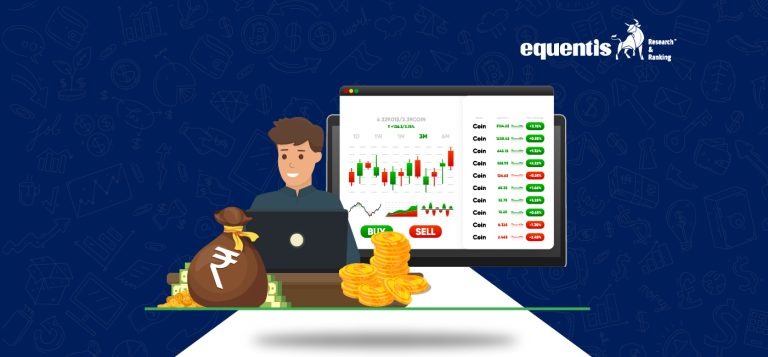In the world of finance and wealth management, the term High Net Worth Individuals (HNWIs) has become increasingly significant. Financial institutions, wealth managers, SEBI registered advisor firms, and private banks classify clients based on their net worth to offer customized investment strategies.
Whether it’s IPO investment for HNI, private equity, or portfolio diversification through AIFs, understanding the HNWI category helps you plan better and grow wealth strategically.
What Is a High-Net-Worth Individual (HNWI)?
A High-Net-Worth Individual (HNWI) is someone with a substantial amount of investable assets. While the exact definition varies across financial institutions, HNWIs typically possess net investable wealth exceeding $1 million (around ₹8–10 crore in India depending on market conditions).
HNWIs are often offered special privileges such as:
- Personal wealth managers
- Priority banking services
- Access to exclusive investment products
- High-value insurance and estate planning solutions
The financial market views high net worth individuals as sophisticated investors who can handle high-risk, high-reward asset classes.
Types of High Net Worth Individuals
1. HNWI – High-Net-Worth Individual
Investable wealth of $1 million+ (₹8–10 crore+).
2. VHNW – Very High-Net-Worth Individual
Investable wealth of $5 million+ (₹40 crore+).
3. UHNWI – Ultra High-Net-Worth Individual
Investable wealth of $30 million+ (₹240 crore+).
Banks and wealth firms tailor products according to these brackets, such as structured notes, global investments, and hedge funds.
How Are HNWIs Identified? (Criteria)
Organizations use specific parameters to categorize high net worth individuals:
✔ 1. Investable Assets
Cash, stocks, bonds, mutual funds, deposits, and liquid investments.
✔ 2. Net Worth Calculation
Using a financial model or ROI calculator, wealth managers calculate assets minus liabilities to determine eligibility.
✔ 3. Income Level
High annual income from business, salary, investments, or inheritance.
✔ 4. Investment Behavior
HNWIs often invest in high-ticket assets like AIFs, PMS, global equities, real estate funds, and private equity.
✔ 5. Financial Risk Capacity
Ability to withstand volatility, making them suitable for advanced products.
Why Do High Net Worth Individuals Invest in AIFs?
You often hear the question: “Why HNIs invest in AIFs?”
Here’s why:
- Access to exclusive and high-growth opportunities
- Professional fund management
- Portfolio diversification across asset classes
- Potential for significantly higher returns
- Flexibility and customized strategies
For HNWIs, AIFs become a powerful wealth creation engine beyond traditional investments.
Example of a High-Net-Worth Individual
Example:
A business owner with the following assets:
- Stocks & mutual funds: ₹4 crore
- Real estate investments (excluding primary home): ₹6 crore
- Fixed deposits and cash reserves: ₹2 crore
- Debt: ₹1 crore
Net worth = ₹12 crore → This individual is clearly classified as an HNWI.
Wealth managers would offer them:
- PMS
- AIF Category II & III
- Global investment opportunities
- Private market investments
- HNI allocations in IPOs
IPO Investment for HNI: A Popular Strategy
HNWIs dominate the NII category in Indian IPOs. Benefits include:
- Allocation advantages due to large bidding amounts
- Potential for strong listing gains
- Access to rapidly growing companies before they hit the market
- Flexibility to apply via multiple accounts or ASBA
This is one of the preferred strategies for HNWIs seeking short-term and medium-term returns.
How Do SEBI Registered Advisors Help HNWIs?
A SEBI registered advisor plays a key role:
- Provides unbiased recommendations
- Conducts risk profiling
- Allocates assets strategically
- Ensures regulatory compliance
- Helps in global and alternative investments
- Guides on wealth preservation, taxation, and succession planning
For high net worth individuals, expert advisory ensures scientific, data-backed decisions.
Disclaimer Note: The securities quoted, if any, are for illustration only and are not recommendatory. This article is for education purposes only and shall not be considered as a recommendation or investment advice by Equentis – Research & Ranking. We will not be liable for any losses that may occur. Investments in the securities market are subject to market risks. Read all the related documents carefully before investing. Registration granted by SEBI, membership of BASL & certification from NISM in no way guarantee the performance of the intermediary or provide any assurance of returns to investors.
FAQs on High-Net-Worth Individuals (HNWIs)
1. What does HNWI mean?
It refers to individuals with over $1 million in investable assets.
2. How do banks classify HNWIs?
Based on liquid net worth, income, investment profile, and financial behavior.
3. What is the net worth required to be an HNWI in India?
Generally above ₹7–10 crore in investable assets.
4. Do HNWIs get special banking privileges?
Yes, including premium wealth management and exclusive investment options.
5. Are HNWIs eligible for AIF investments?
Yes, most AIFs require a minimum investment of ₹1 crore.
6. Why do HNWIs invest in AIFs?
For diversification, higher return potential, and access to private markets.
7. How do I calculate if I’m an HNWI?
Use a ROI calculator and net worth formula: assets – liabilities.
8. What is the difference between HNWI and UHNWI?
UHNWI has $30 million+ in investable assets.
9. Are HNWIs considered sophisticated investors?
Yes, due to high risk capacity and investment knowledge.
10. Do HNWIs invest in IPOs?
Yes, through the NII category in IPOs.
11. What privileges do HNWIs get from wealth managers?
Tax planning, estate management, AIF access, global opportunities.
12. Can real estate make you an HNWI?
Yes, if the real estate is investment-driven and not primary residence.
13. Do HNWIs have better access to credit?
Yes, through premium banking and priority loan approvals.
14. How many HNWIs are there in India?
The number is growing rapidly due to entrepreneurship and market growth.
15. Can business owners be HNWIs?
Absolutely — many HNWIs come from business backgrounds.
16. Do HNWIs use SEBI registered advisors?
Yes, to ensure transparent and unbiased financial planning.
17. What do HNWIs invest in?
AIFs, PMS, equity, global funds, debt, gold, private equity.
18. Are HNWIs liable to pay higher taxes?
They fall under higher tax slabs and often use tax optimization strategies.
19. Can professionals (like doctors & CEOs) become HNWIs?
Yes, through high income and disciplined investing.
20. What is the biggest advantage of being an HNWI?
Access to exclusive and high-performing investments unavailable to retail investors.










